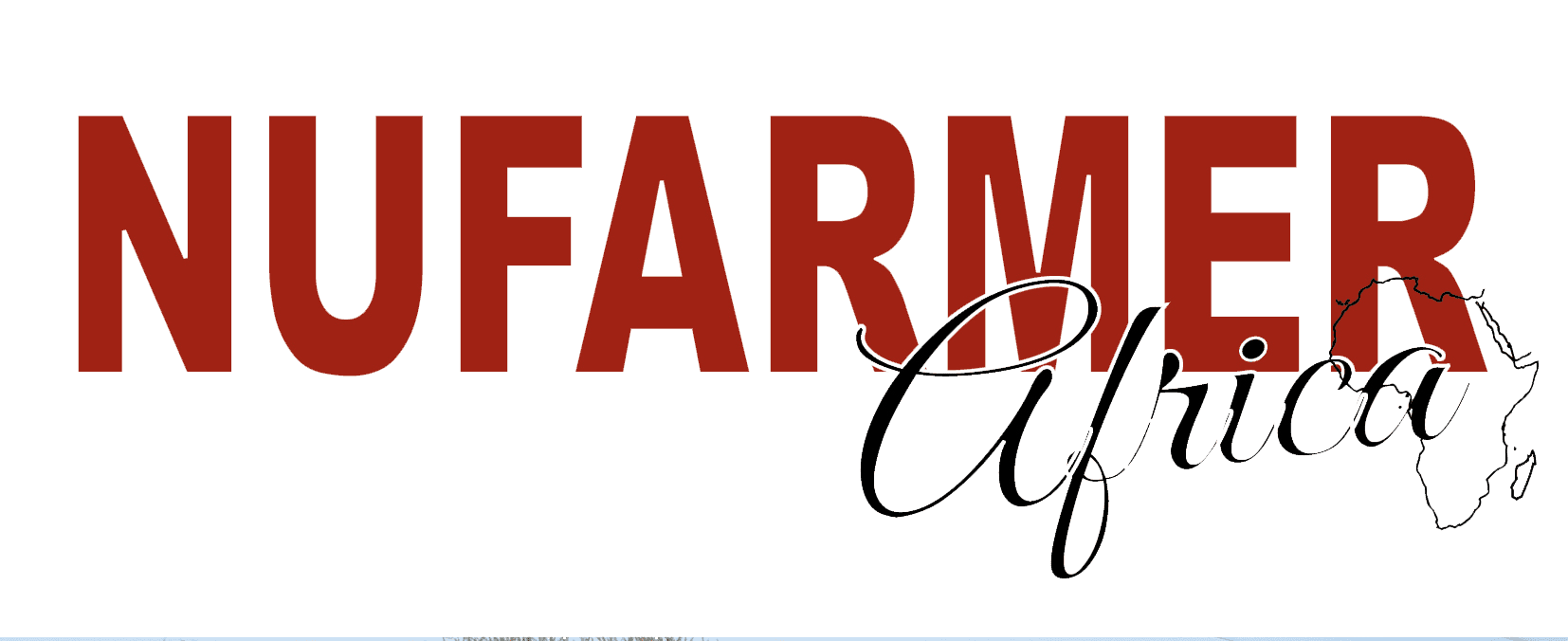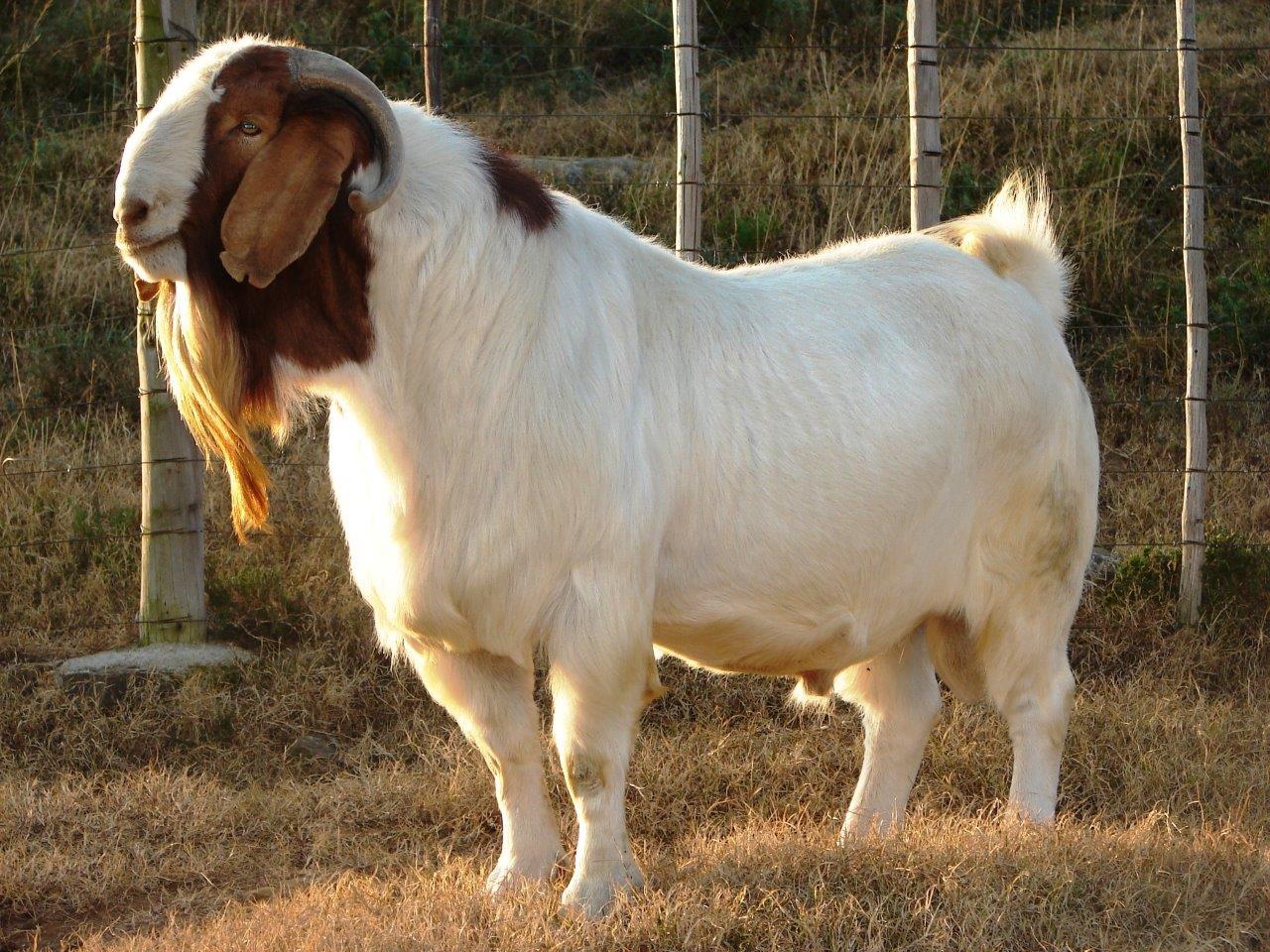Boer Goats in South Africa: A Comprehensive Guide in 2023
Boer goats, originating from South Africa, have gained widespread popularity for their exceptional qualities and versatility. In this comprehensive guide, we will delve into everything you need to know about Boer goats, from their origins and breeds to their main purposes, advantages, disadvantages, care, breeding, diseases, and marketing of their meat and milk.
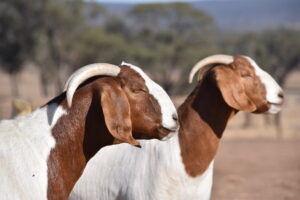
1. Origins of Boer Goats
Boer goats, which translates to “farmer” in Dutch, were developed in South Africa in the early 20th century. The breed was a result of crossbreeding indigenous goats with European and Asian breeds, with a primary focus on enhancing meat production. They quickly gained recognition for their robustness, adaptability, and ability to thrive in various environments.
2. Breeds of Boer Goats
2.1. Full-Blood Boer Goats
Full-blood Boer goats are purebred and known for their distinctive white bodies with a red or brown head. This breed is highly valued for its superior meat quality and overall hardiness.
2.2. Percentage Boer Goats
Percentage Boer goats are a result of crossbreeding Boer goats with other breeds. While they may not be purebred, they retain many desirable Boer characteristics, making them popular for commercial farming.
3. Main Purposes per Breed
Boer goats are primarily raised for meat production, and each breed serves this purpose with unique advantages.
3.1. Full-Blood Boer Goats
Full-blood Boer goats are prized for their high-quality meat, characterized by leanness and tenderness. Their ability to adapt to different climates makes them a preferred choice for meat production in diverse regions.
3.2. Percentage Boer Goats
Percentage Boer goats are valued for their adaptability and are often chosen by farmers aiming for a balance between meat production and environmental resilience. Their ability to thrive in varying conditions makes them suitable for a wide range of farming operations.
4. Advantages of Boer Goats
4.1. Meat Quality
Boer goat meat is renowned for its excellent quality. It is lean, tender, and possesses a unique flavor, making it highly sought after by consumers and chefs alike.
4.2. Adaptability
Boer goats are known for their adaptability to different climates and terrains. Whether in arid regions or more temperate climates, these goats demonstrate resilience and ease of management.
4.3. High Reproductive Rates
Boer goats exhibit high reproductive rates, with does often giving birth to twins or triplets. This characteristic is advantageous for farmers aiming to increase their herd size efficiently.
5. Disadvantages of Boer Goats
5.1. Susceptibility to Parasites
Boer goats can be susceptible to internal parasites, requiring vigilant management practices to control infestations and ensure the overall health of the herd.
5.2. Limited Milk Production
While Boer goats are primarily raised for meat production, their milk production is relatively limited compared to dairy-specific breeds. Farmers seeking dual-purpose goats may need to consider alternative breeds.
6. Caring for Boer Goats
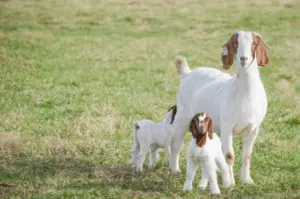
Proper care is essential to ensure the health and well-being of Boer goats.
6.1. Nutrition
A well-balanced diet is crucial for Boer goats, especially during gestation and lactation. Providing access to quality forage and supplemental feed ensures proper growth and development.
6.2. Shelter
Boer goats require shelter from extreme weather conditions, including heat and cold. Adequate housing protects them from the elements and promotes overall health.
6.3. Veterinary Care
Regular veterinary check-ups, vaccinations, and parasite control are essential components of Boer goat care. Early detection of health issues can prevent the spread of diseases and ensure a thriving herd.
7. Breeding Boer Goats
7.1. Selecting Breeding Stock
Careful selection of breeding stock is crucial to maintain and improve desirable traits in Boer goats. Consider factors such as conformation, reproductive performance, and overall health when choosing breeding animals.
7.2. Breeding Practices
Boer goats are often bred through natural mating, but artificial insemination is also a common practice. Timely breeding and proper management of the breeding season contribute to successful reproduction.
8. Diseases and Sickness to Look Out For
8.1. Internal Parasites
Boer goats are prone to internal parasites such as worms. Regular fecal testing and strategic deworming are essential to prevent parasitic infections.
8.2. Respiratory Infections
Respiratory infections, including pneumonia, can affect Boer goats, particularly in crowded or poorly ventilated conditions. Adequate ventilation and isolation of sick animals help prevent the spread of respiratory diseases.
9. Treatment and Prevention
9.1. Veterinary Intervention
Prompt veterinary intervention is crucial when treating illnesses in Boer goats. Establishing a relationship with a knowledgeable and experienced veterinarian ensures timely and effective treatment.
9.2. Vaccinations
Following a regular vaccination schedule is essential to prevent common diseases. Vaccines for diseases such as Clostridium perfringens and Pasteurella are vital for maintaining herd health.
10. Marketing of Boer Goats, Meat, and Milk
10.1. Marketing Strategies
Successful marketing of Boer goats involves highlighting their desirable traits, such as meat quality, adaptability, and high reproductive rates. Utilize online platforms, local markets, and agricultural events to reach potential buyers.
10.2. Meat and Milk Marketing
Promoting Boer goat meat involves emphasizing its quality and unique flavor. For those interested in milk production, marketing the milk’s nutritional benefits can attract consumers seeking an alternative to traditional dairy products.
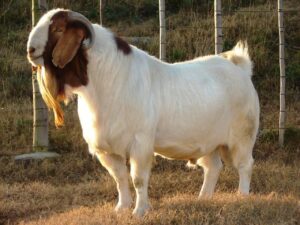
11. Advantages of Boer Goat Meat and Milk
11.1. Nutritional Value
Boer goat meat is not only delicious but also offers nutritional benefits. It is a good source of lean protein, essential vitamins, and minerals. Boer goat milk, though produced in smaller quantities, is rich in nutrients and has a unique taste.
11.2. Sustainable Farming
Raising Boer goats for meat and milk contributes to sustainable farming practices. Their adaptability and efficiency in converting forage into high-quality meat make them an environmentally friendly choice for livestock production.
Conclusion
In conclusion, Boer goats in South Africa are a valuable asset for farmers seeking a versatile and productive livestock breed. From their origins and breeds to their main purposes, advantages, and disadvantages, understanding the intricacies of Boer goat farming is essential for success. With proper care, breeding practices, and marketing strategies, Boer goats can play a significant role in sustainable agriculture, providing high-quality meat and milk to meet the demands of today’s conscientious consumers.
